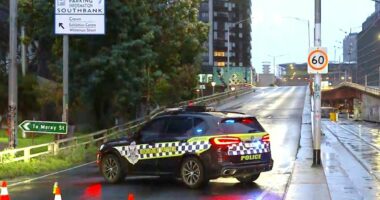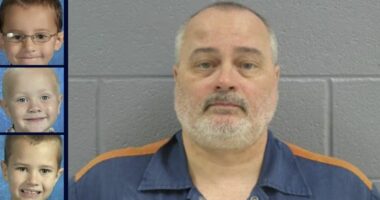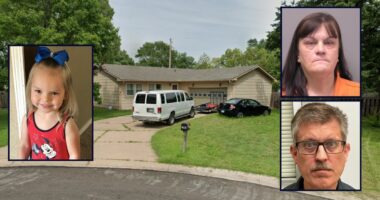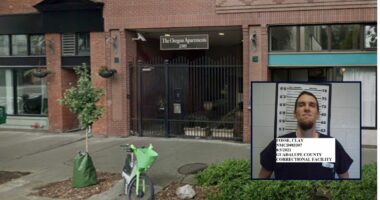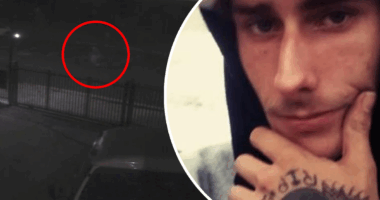Share this @internewscast.com
A surveillance video captures a crucial moment where Naasson Hazzard’s victim is seen getting into his truck in Dallas, Texas, at 9:27 p.m. on August 15, 2024 (United States Attorney’s Office in the Northern District of Texas).
Last year, a Texas truck driver was guilty of abducting and murdering an Army veteran before discarding her body in a wooded area. On Thursday, he was sentenced to life in prison, a punishment that he will serve without the possibility of parole.
Naasson Hazzard, aged 28 and from Austin, was found guilty by a jury in February for kidnapping that led to death, a crime that mandates life imprisonment. When the sentence was officially pronounced on Thursday, authorities acknowledged the resolution of the case and paid tribute to the victim, Caleigha Zangari, a U.S. Army veteran and mother from the San Diego area.
Love true crime? Sign up for our newsletter, The Law&Crime Docket, to get the latest real-life crime stories delivered right to your inbox.
“The tremendous, relentless work of multiple law enforcement partners brought the terrible acts of this predator to light, and the jury answered the call for justice by finding him guilty,” acting U.S. Attorney for the Northern District of Texas Nancy Larson said in a United States Attorney’s Office press release. “Now, the life sentence he will serve reflects the value and sanctity of this victim’s life. We hope that this sentence helps her family in the healing process.”
On Aug. 15, 2024, Zangari entered Hazzard’s semi-truck in Dallas at about 9:30 p.m., according to surveillance video evidence presented during the trial. She was believed to be a sex worker who had traveled from California to Texas with her child the week of Aug. 5, 2024, according to an arrest affidavit for Hazzard.
On Aug. 21, 2024, the San Diego County Sheriff’s Office relayed to Homeland Security Investigations’ North Texas Trafficking Task Force that Zangari and her son had been reported as missing persons at risk. Two days later, on Aug. 23, 2024, her body was found in a wooded area around Pittsburg, Texas, with a black plastic bag tied around her head.
Authorities did not release a cause of death. It is also unclear what happened to the victim’s son. Law&Crime reached out to the U.S. Attorney’s Office for additional information.
Cell phone records proved to be investigators’ biggest lead. They found that Zangari, who had posted advertisements online in the preceding days, had communicated with a number about 13 times in the two days before she was kidnapped, according to the affidavit. That number belonged to Hazzard.
Investigators obtained Hazzard’s cell phone records and found that he traveled from the pickup location in Dallas to a parking lot nearby and remained there for 17 minutes. He is said to have then driven more than three hours to the wooded area east of Dallas, where he texted his boss that he would be taking a sick day the following day. He then remained in that area for nearly an hour.
Prosecutors detailed how the next day, Hazzard and his wife returned to the scene in Pittsburg, before going to dinner in Tyler, which is located about an hour south.
The coming days were revealing for investigators. Hazzard is said to have switched cell phones, deleted his Google and Life360 location sharing accounts, cleaned his truck with bleach, and searched online for: “how many years for first second and third degree murders.”
His wife appeared to have had suspicions, reportedly searching, “Pittsburg Texas news.”
The same day Zangari’s body was found, her cell phone was located shattered on the side of the road on the route Hazzard drove on the night of Aug. 15, prosecutors said.
During a sentencing hearing on Thursday, Zangari’s brother spoke about her death.
“Your Honor, Naasson didn’t just take a life. He destroyed futures. He created a ripple effect of suffering that reaches further than he could ever understand,” he told the court. “I ask you, please don’t see my sister as just a name in a case file. She was a daughter. A sister. A mother. A light in the lives of everyone who knew her. Her life mattered. And her death must mean something.”



